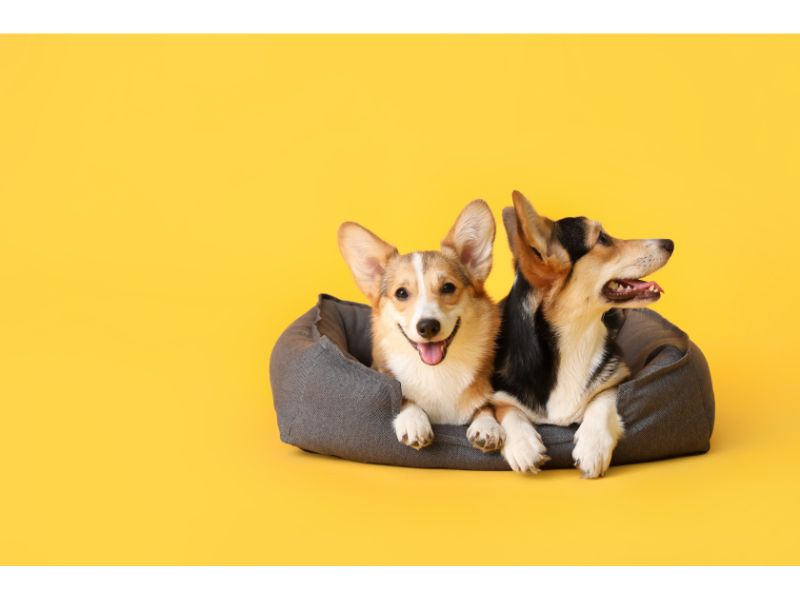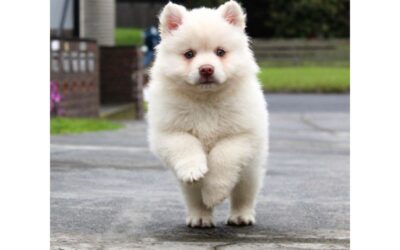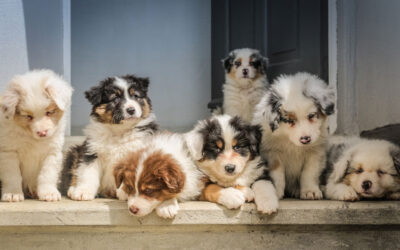To dry deer legs for dogs, first remove any excess fat and tissue, then air dry the legs in a well-ventilated area for several weeks. Drying deer legs for dogs can be a beneficial and healthy treat for our furry friends.
Not only does it provide them with a natural source of protein and calcium, but it also helps to keep their teeth clean and their jaws strong. However, it is important to follow the proper process to ensure safe and effective drying.
We will discuss the step-by-step guide on how to dry deer legs for dogs, providing you with all the information you need to give your dog a tasty and nutritious snack. Following these guidelines will help ensure that the dried deer legs are safe for consumption and enjoyable for your four-legged companion.
The Importance Of Natural Chews For Dogs
Dogs are natural chewers, and giving them appropriate chew toys is vital for their dental health and overall well-being. Natural chews, such as dried deer legs, are an excellent option to satisfy your furry friend’s chewing instincts while also promoting good oral hygiene. In this article, we will explore why it is essential to choose natural chews for your dogs and the numerous benefits they offer to their dental health. We will also discuss the drawbacks of artificial chews and why opting for natural alternatives is the way to go.
Dogs’ Natural Chewing Instincts
Dogs have an innate need to chew. It is a behaviour rooted in their DNA and serves several purposes. Chewing helps alleviate boredom and anxiety, prevents destructive behaviours like excessive barking or digging, and strengthens jaw muscles. Providing them with suitable chews not only fulfils these instincts but also helps them maintain a healthier mouth.
Benefits Of Natural Chews For Dental Health
Natural chews can play a crucial role in promoting good dental hygiene in dogs. When dogs chew on natural items, such as dried deer legs, it stimulates the production of saliva, which can help wash away harmful bacteria and plaque buildup. The act of gnawing on these chews also provides a mechanical cleaning action, helping to remove tartar and reduce the risk of dental diseases, such as gingivitis or periodontitis.
Moreover, natural chews can help keep your dog’s teeth strong and healthy by exercising their jaws and reducing the likelihood of tooth fractures or breakages. They also provide mental stimulation, preventing boredom and potentially destructive behaviours. Natural chews are not only a treat for your dog but also a proactive approach to their oral health.
The Problem With Artificial Chews
While artificial chews may seem convenient or appealing, they often come with downsides that can impact your dog’s health. Many artificial chews are made with ingredients that are not nutritionally beneficial for your dog, such as by-products, artificial flavours, and preservatives. Additionally, some artificial chews can be too hard or abrasive, causing damage to your dog’s teeth or even posing a choking hazard.
Furthermore, artificial chews might lack the natural chewing experience that dogs crave, leading to dissatisfaction and an increased likelihood of destructive chewing on other items in your home. By opting for natural chews like dried deer legs, you can ensure your dog receives a safe, enjoyable, and healthy chewing experience.
How To Choose The Right Deer Legs For Dogs
When it comes to providing your furry friend with a natural and nutritious treat, deer legs are an excellent choice. Not only are they packed with flavour, but they also offer a range of health benefits for dogs. However, choosing the right deer legs for your canine companion is crucial. In this section, we will discuss the key factors to consider when selecting deer legs for your dog.
Sourcing High-quality Deer Legs
The first step in choosing the right deer legs for your dog is to ensure that you source them from a reputable and trustworthy supplier. Look for suppliers who specialize in providing natural dog treats and have a strong track record in delivering high-quality products. To ensure the utmost freshness and safety, opt for deer legs that come from wild or naturally sourced deer, as these are less likely to be exposed to harmful chemicals or additives.
Considerations For Size And Breed
When selecting deer legs for your dog, it’s essential to take into account their size and breed. Larger dogs, such as Great Danes or Mastiffs, will require bigger deer legs to satisfy their chewing needs. On the other hand, smaller breeds like Chihuahuas or Dachshunds will benefit from deer legs that are more proportionate to their size. Pay attention to the weight and dimensions provided by the supplier to ensure you choose the most suitable deer legs for your furry friend.
| Breed Size | Recommended Deer Leg Size |
|---|---|
| Small (under 20 lbs) | 3-4 inches long |
| Medium (20-50 lbs) | 4-6 inches long |
| Large (50+ lbs) | 6-8 inches long |
Understanding The Nutritional Value
Another crucial aspect to consider when choosing deer legs for your dog is their nutritional value. Deer legs are rich in protein and offer essential minerals like calcium and phosphorus. These nutrients contribute to healthy muscle development and support strong bones and teeth in dogs. Ensure that the deer legs you select are free from artificial preservatives and additives, as these can potentially cause digestive issues or adverse reactions in your dog.
In addition, it’s important to remember that deer legs are a treat and should not replace a well-balanced diet. They should be given to your dog in moderation, alongside their regular meals.
By taking the time to source high-quality deer legs, considering the size and breed of your dog, and understanding the nutritional value they provide, you can confidently choose the right deer legs for your four-legged companion. Not only will your dog enjoy the delicious taste, but they will also benefit from the natural goodness that these treats offer.
Preparing And Preserving Deer Legs For Dogs
When it comes to providing natural and nutritious treats for our furry friends, drying deer legs for dogs can be a great option. Not only can it keep them occupied for hours, but it also serves as an excellent source of protein and promotes good dental health. In this guide, we will discuss the step-by-step process of preparing and preserving deer legs for dogs, ensuring that they are safe and healthy for consumption.
Cleaning And Sanitizing The Deer Legs
Before you begin the drying process, it is essential to clean and sanitize the deer legs thoroughly. This step helps remove any dirt, bacteria, or contaminants that may have accumulated during the hunting or processing phase.
To clean the deer legs, follow these steps:
- Start by rinsing the legs under cold water to remove any loose dirt or debris.
- Use a brush or sponge to scrub the legs gently. Pay close attention to the crevices and joints to ensure all the dirt is removed.
- Once cleaned, sanitize the deer legs by soaking them in a solution of one part water and one part vinegar for approximately 15 minutes. Vinegar is a natural disinfectant and can help eliminate any remaining bacteria.
- Rinse the legs thoroughly with cold water to remove any vinegar residue afterwards.
- Dry the legs completely using a clean towel or paper towel. Ensure there is no excess moisture, as it can lead to mould growth during the drying process.
Removing Excess Fat And Tissue
Now that the deer legs are clean and sanitized, the next step is to remove any excess fat and tissue that may not be suitable for consumption.
To remove the excess fat and tissue, follow these guidelines:
- Use a sharp knife to carefully trim away the visible fat from the deer’s legs. Fat can become rancid during the drying process, affecting the quality and taste of the finished product.
- Additionally, remove any remaining connective tissue or membrane that might still be attached to the legs. These parts can be tough and hard for dogs to chew on.
- Trim the legs to the desired size, taking into consideration the chewing abilities of your dog. Smaller pieces can be easier for dogs to handle and consume.
Applying Natural Preservatives
To ensure the deer legs stay fresh and appealing for your furry companions, it is crucial to apply natural preservatives before the drying process.
Some popular natural preservatives include:
- Salt: Salt helps draw out moisture from the legs and acts as a natural preservative. Sprinkle a generous amount of salt all over the legs, ensuring it covers the entire surface.
- Herbs and Spices: Adding dried herbs and spices can enhance the flavour of the deer legs while also providing additional health benefits. Some examples include rosemary, thyme, and turmeric.
After applying the preservatives, place the deer legs on a drying rack or hang them in a well-ventilated area. Allow the legs to air dry for several weeks until they become hard and brittle.
By following these steps, you can successfully prepare and preserve deer legs for your beloved dogs. Remember to store the dried legs in an airtight container or bag to maintain their freshness. Providing these high-protein treats to your dogs not only fulfils their natural chewing instincts but also contributes to their overall well-being.
Step-by-step Guide To Drying Deer Legs For Dogs
Drying deer legs for dogs is a great way to provide them with a nutritious and long-lasting chew. It’s important to follow the proper steps to ensure the legs are cut, dried, and stored correctly. In this step-by-step guide, we’ll walk you through the process of drying deer legs for your furry friend, including properly cutting the legs, choosing between air drying and using a dehydrator, and the ideal drying conditions and time required for optimal results.
Properly Cutting The Deer Legs
Before you begin drying the deer legs, it’s crucial to make sure they are cut properly. This not only ensures the legs are the right size for your dog but also helps with the drying process. Here’s how to do it:
- Gather the necessary tools: You’ll need a sharp knife, a cutting board, and a good pair of kitchen shears.
- Safety first: Before you start cutting, make sure to wear gloves to protect your hands.
- Remove excess hair: Use your kitchen shears to trim any excess hair from the legs. This will make the drying process cleaner and more hygienic.
- Cut the legs into appropriate sizes: Depending on your dog’s size, you’ll want to cut the legs into manageable pieces. Small and medium-sized dogs may benefit from having their legs cut into smaller sections, while larger dogs can handle larger pieces.
Air Drying Versus Using A Dehydrator
When it comes to drying deer legs for dogs, you have two options: air drying or using a dehydrator. Both methods have their advantages, and it ultimately depends on your preference and available resources. Here’s what you need to know:
| Air Drying | Using a Dehydrator |
|---|---|
| It is affordable and requires no additional equipment | Efficient and speeds up the drying process |
| Requires a well-ventilated area with good airflow | Allows for precise temperature control |
| It may take longer to dry, especially in humid climates | Provides consistent heat for even drying |
The Ideal Drying Conditions And Time Required
Now that you’ve decided on the method of drying, it’s important to create the ideal conditions for your deer legs to dry properly. Here are the recommended conditions and approximate drying times:
- Temperature: Maintain a temperature between 60°F and 70°F (15°C and 21°C). This helps prevent spoilage and ensures a safe drying process.
- Humidity: Keep the humidity level below 60%. Excessive humidity can hinder the drying process and may lead to mould growth.
- Drying time: Depending on the size of the deer legs and the chosen drying method, the drying process can take anywhere from 3 to 7 days. Monitor the legs regularly and check for dryness by feeling the texture.
By following these steps and adhering to the ideal drying conditions and time required, you’ll be able to provide your dog with a chew treat that’s not only delicious but also promotes their dental health. Whether you choose to air dry or use a dehydrator, your furry friend is sure to enjoy hours of chewing pleasure with these homemade deer leg treats.
Storing And Using Dried Deer Legs For Dogs
Once you have successfully dried deer legs for your furry friend, it’s important to store them properly to prevent spoilage and maximize their shelf life. Additionally, knowing how to introduce these tasty treats to your dog and monitoring their chewing habits and health benefits are crucial for a safe and enjoyable experience. In this section, we will explore safe storage methods, proper introduction techniques, and the importance of monitoring your dog’s chewing habits and health benefits.
Safe Storage Methods To Prevent Spoilage
When it comes to storing dried deer legs for dogs, it’s essential to adopt safe practices that keep the treats fresh and free from spoilage. To ensure the best quality and longevity of the dried deer legs, consider the following storage methods:
- Airtight containers: Store the dried deer legs in airtight containers, such as glass jars or plastic containers with secure lids. This will prevent any moisture or air from entering the container and causing the treats to spoil.
- Cool, dark location: Choose a cool, dark location for storing the dried deer legs. Exposing them to direct sunlight or heat can hasten spoilage and decrease their nutritional value.
- Refrigeration or freezing: If you anticipate a longer storage period, consider refrigerating or freezing the dried deer legs. This additional step can help extend their shelf life and keep them fresh for your furry friend.
How To Properly Introduce Dried Deer Legs
Introducing your dog to dried deer legs is an exciting moment, but it’s important to do it right to ensure a positive experience. Follow these steps to introduce dried deer legs to your canine companion properly:
- Start with small portions: Begin by offering your dog a small piece of the dried deer leg. This allows them to become familiar with the taste and texture without overwhelming their digestive system.
- Supervise the first chewing sessions: During the initial chewing sessions, closely monitor your dog to ensure they chew the dried deer leg safely and do not experience any issues. This helps prevent the risk of choking or any other potential harm.
- Gradually increase the amount: As your dog becomes comfortable with the dried deer legs, gradually increase the portion size. This allows their digestive system to adapt to the new treatment and minimizes the risk of any digestive upsets.
Monitoring Your Dog’s Chewing Habits And Health Benefits
Regular monitoring of your dog’s chewing habits and health benefits is vital to their overall well-being. Keep an eye on the following factors:
- Chewing behaviour: Observe how your dog chews the dried deer legs. Ensure they chew slowly and thoroughly, as proper chewing promotes dental health and aids in digestion.
- Health benefits: Monitor your dog’s overall health and any specific improvements after incorporating dried deer legs into their diet. These tasty treats are rich in protein, offer dental benefits, and may help with joint health and mobility.
By paying attention to your dog’s chewing habits and health benefits, you can make informed decisions about incorporating dried deer legs into their regular diet and adjust accordingly.
Frequently Asked Questions On How To Dry Deer Legs For Dogs
How Long Does It Take To Dry Deer Legs For Dogs?
Drying deer legs for dogs typically takes about 2-3 weeks, depending on the size of the legs and the drying conditions. It is important to ensure the legs are completely dried before giving them to your dog to avoid any potential bacteria growth.
What Are The Benefits Of Giving Dogs Dried Deer Legs?
Dried deer legs provide numerous benefits for dogs. They are rich in protein, promote healthy teeth and gums, help maintain joint health, and provide a natural and enjoyable chewing experience for your furry friend.
How Can I Safely Dry Deer Legs For Dogs At Home?
To safely dry deer legs for dogs at home, start by removing any excess meat from the legs. Then, apply a mixture of salt and baking soda to the legs to draw out moisture. Hang the legs in a cool, dry place with good airflow, ensuring they are not touching each other.
Regularly monitor the legs and rotate them for even drying.
Can I Give Dried Deer Legs To Puppies?
While dried deer legs can be a great treat for adult dogs, they may not be suitable for puppies. Puppies have developing teeth and gums, so it’s important to consult with a veterinarian to ensure the treats are appropriate for their age and chewing capabilities.
Conclusion
To ensure your furry friend enjoys the benefits of dried deer legs, it’s essential to follow the proper process. By taking the time to thoroughly clean, season, and dry the legs, you can create a healthy and flavorful treat for your dog.
Remember to store the dried legs in a cool, dry place to maintain their freshness and quality. With these simple steps, you can provide your canine companion with a natural and satisfying snack. Happy drying!




